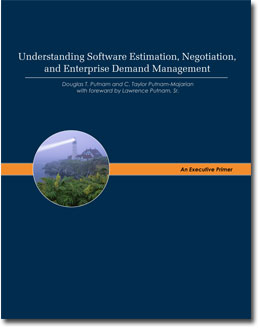New Article: How a Center of Excellence Can Help Teams Develop Excellent Software

The ways that enterprises handle software development have changed immensely over the past couple of years. But as many organizations are upending traditional business cultures as they strive for greater collaboration, some core principles remain the same. Business stakeholder requirements need to be delivered within a reasonable timeframe and budget, with a good user experience and solid return on investment. By implementing an Estimation Center of Excellence, organizations can ensure that their projects remain on track, even (or perhaps especially) in highly agile environments. In this article originally published in SD Times, Doug Putnam outlines best practices for establishing an Estimation Center of Excellence.

 Recently the correlation between seeking the best gasoline prices and
Recently the correlation between seeking the best gasoline prices and 
 One thing that I hear from project managers on a regular basis is that estimating a software project is a really tough thing to do. I have to tell you that it doesn’t have to be that way. Here are some reasons why project estimation can be easier than you think.
One thing that I hear from project managers on a regular basis is that estimating a software project is a really tough thing to do. I have to tell you that it doesn’t have to be that way. Here are some reasons why project estimation can be easier than you think.